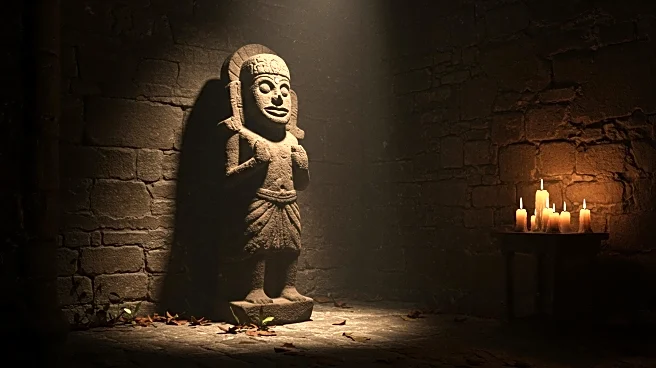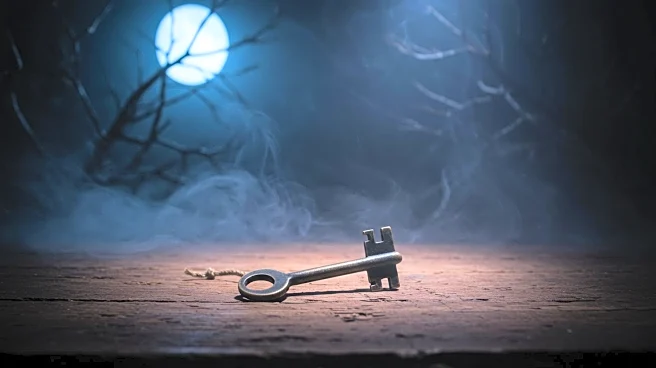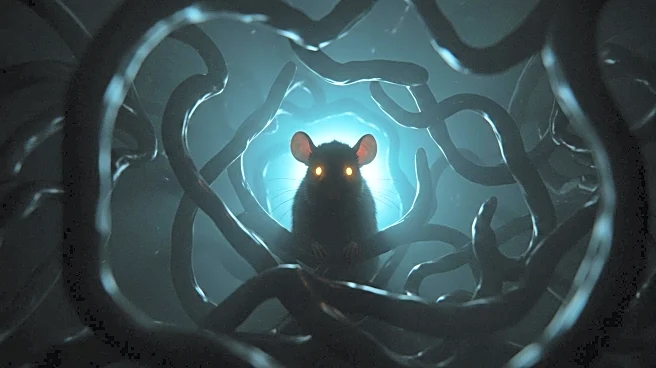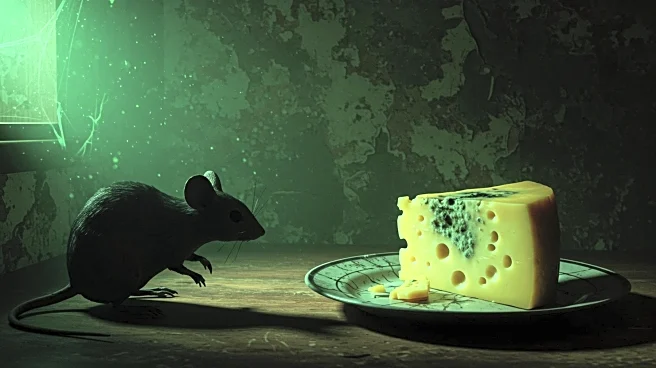What is the story about?
What's Happening?
The Children of Clay, a free horror game available on Steam, has captivated players with its intense and unnerving experience. Set in a dark office within a museum or university, the game places the player in the role of an unnamed protagonist who receives a mysterious prehistoric idol from a colleague. This idol, crafted and digitized by developer Balazs Ronai, serves as the focal point of the game, creating a haunting atmosphere with its uncanny stop-motion animation. Players use tools at their desk to examine the idol, cross-referencing findings with an anthropology textbook, leading to a dark turn in the investigation. The game has been praised for its smart and unique horror-puzzle experience, reminiscent of primeval European artifacts and modern indie oddities.
Why It's Important?
The Children of Clay stands out in the horror game genre by offering a unique experience that combines elements of anthropology and horror. Its use of a real object as the central artifact adds a layer of authenticity and intrigue, drawing players into a narrative that is both educational and terrifying. The game's success highlights the growing interest in indie horror games that push boundaries and offer innovative gameplay mechanics. It also demonstrates the potential for small developers to create impactful experiences without the need for large budgets, contributing to the diversity and richness of the gaming industry.
What's Next?
As The Children of Clay continues to gain attention, it may inspire other developers to explore similar themes and mechanics in their games. The success of this game could lead to increased interest in horror games that incorporate real-world artifacts and historical elements, potentially influencing future game design trends. Additionally, the game's popularity may encourage the developer, Balazs Ronai, to expand on this concept or create new projects that further explore the intersection of horror and anthropology.
Beyond the Headlines
The Children of Clay not only provides a thrilling gaming experience but also raises questions about the ethical implications of using real-world artifacts in digital media. It prompts discussions on the representation of historical objects and the responsibilities of developers in portraying them accurately and respectfully. Furthermore, the game's success may contribute to a broader cultural appreciation for the artistry and craftsmanship involved in stop-motion animation, encouraging more creators to explore this medium.
AI Generated Content
Do you find this article useful?











